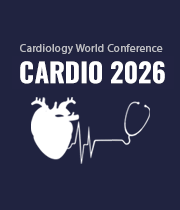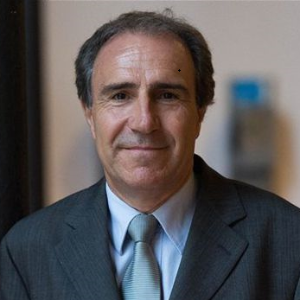Title : Post-Cardiotomy ECMO (PC-ECMO)
Abstract:
The term post-cardiotomy cardiogenic shock (PCCS) has been used variably to describe cardiogenic shock from 0 to 48 hours after separation from cardiopulmonary bypass. The incidence of PCCS is commonly reported to be 1% to 1.4% of patients undergoing cardiopulmonary bypass. PCCS has been and remains one of the most common indications of ECMO for which adults are placed on veno-arterial (VA) ECMO for cardiac support. PCCS has been and still is one of the most common indications of ECMO for which adults are placed on veno-arterial (VA) ECMO for cardiac support. Although PCCS is an almost universally lethal condition in which timely institution of ECMO can be lifesaving, mortality rates after ECMO for PCCS are among the highest for any indication for ECMO and have remained largely unchanged for almost 2 decades despite a dramatic increase in utilization. There must be a better understanding of the benefits and risks of ECMO in this setting to decide who might benefit from such a costly, resource-intensive therapy associated with such a high rate of mortality as well as serious complications.
Although there is a considerable body of literature on survival and risk factors for mortality for VA-ECMO, it often fails to address key variables that are useful for prognostication for PCCS patients. The Survival After VA-ECMO score (generated from Extracorporeal Life Support Organization data) does not examine PCCS specifically as a subgroup. Most of the literature consists of small or single-center studies with inconsistent definitions and outcomes of interest.A series of recent reports have attempted to apply the techniques of systematic review and meta-analysis to gain a better understanding of the risk factors influencing survival from PCCS with ECMO. Khorsandi et al. summarized 24 studies from 1992 to 2016 with 1,926 patients. Survival to hospital discharge was 30.8%, and they identified risk factors including advanced age (>70), acute kidney injury on ECMO, rising lactate on ECMO, obesity, high European System for Cardiac Operative Risk Evaluation (EuroSCORE)(>20), and >48 hours of ECMO support. A meta-analysis of 31 studies from 2002 to 2015 that included 2,986 patients reported 36.1% hospital survival and 30% 1-year survival. Both studies demonstrated high rates of serious complications, including stroke, bleeding, infection, and leg ischemia.
A systematic review of the literature and meta-analysis of 20 studies published between 1996 and 2017, including 2,877 patients, revealed a hospital survival of 34%, a 1-year survival of 24%, and a midterm 3- to 5-year survival of 18%. This data reinforces the poor prognosis for this group of patients, as indicated by previous studies. The risk factors for in-hospital mortality were age >65, diabetes, pre-operative renal insufficiency, EuroSCORE >20, pulmonary disease, and pre-ECMO lactate. All meta-analyses are susceptible to the influence of publication bias. In addition to further risk stratification for PCCS, it would also be useful to evaluate the efficacy of adjunct therapies such as inotropes or an intra-aortic balloon pump or other strategies for left ventricular (LV) unloading. There is evidence that combining ECMO with an intra-aortic balloon pump increases the efficacy of weaning. Efficacy of LA and PA cannulation is an alternative LV unloading strategy for patients supported with peripheral or central VA-ECMO, and can be efficiently utilized in PC-ECMO, surpassing Impella with lower complication rates, and IABP with more effective unloading.
Conclusion: ECMO is a lifesaving therapy for PCCS, an almost uniformly lethal condition; however, the combination of its high cost and intensity of resource utilization with persistently low reported rates of survival indicates the need for more prognostic information to help guide its use.



